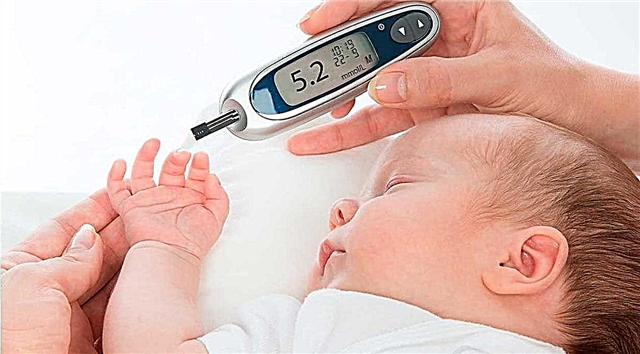
Tablet pregnancy tests are one of the popular modifications of test systems for home pregnancy diagnostics. And in recent years, they are gaining popularity due to the fact that they are more accurate than simple stripes.

How do they look and work?
A cassette or flatbed test system is a small plastic cassette with paper strips inside. One of them is the control, and the other is the test. There are two small windows on the body in the central part - one is small, urine should get into it, which is instilled with a special pipette that comes with the kit. In a larger window, after the allotted time, the diagnostic result appears - one or two stripes (option: signs "" + "or" - ").
To collect urine, which is then buried in the hole for diagnosis, a special container is prudently included in the kit.
There is an absorbent material inside the cassette that gets wet quickly. And the reagent applied by the manufacturers can react. It reacts to the presence of chorionic gonadotropin in the urine. This hormone indicates the presence of pregnancy, since it is produced by thin chorionic villi, with which the ovum is attached to the wall of the uterus. Implantation usually occurs a week after conception, and every 48 hours the hCG level almost doubles if the pregnancy develops correctly and without deviations.
The substance accumulates in urine gradually, therefore, by the beginning of the delay, its amount is usually enough for the reagent to react and the second strip becomes colored.
In this, the principle of operation of the cassette device is no different from either strips or from expensive electronic and inkjet models. From the first day of delay in menstruation, the accuracy of determination exceeds 97%. Of course, it does not pull at the indicated 99%, since only a blood test for the desired hormone, which is carried out by medical specialists in laboratory conditions, has such accuracy.

Precision and efficiency
Tablet tests cannot be called very sensitive, since the threshold for their perception starts from 20 mIU / ml, which indicates an average sensitivity, and therefore too early diagnosis can lead to incorrect results, to an error.
Even with the existing implantation bleeding, proclaiming the day of implantation, and then when the woman is sure that everything worked out, it is still not worth doing the test during the embryo attachment process and for several days after the day of implantation - the result will be negative. It is necessary that the hormone accumulates in urine in an amount sufficient for the reaction of the reagent. Therefore, the optimal period that allows you to count on more accurate results is 1-2 days before the start of the delay and the first days after its start. The earlier a woman begins testing, the lower the chances of reliable and accurate results.
To improve performance, it is better to use the first morning portion of urine after waking up. Given the design of the test, it will be quite problematic to make it outside the home, and therefore test at home. After a delay in 5-6 days, the test can be carried out at any time of the day - hCG by this time reaches high values, significantly exceeding the system's sensitivity threshold.
Do not violate the instructions for use, most of the erroneous "verdicts" are the result of ignoring the rules of use. If you have tumor diseases, you have undergone the IVF treatment protocol, or you have ovulation stimulated with hormones in this cycle, the results are always erroneous - the level of hCG is increased without pregnancy.


Who needs such a test?
Considering that the principle of operation of the test cassette is no different from other models and modifications, but the price is different and significantly, the question arises, who needs such systems at all. After all, there are cheaper options (strip, for example), so why overpay in this case.
Experts believe that tablet tests, as the so-called second generation systems, are more accurate. This provides a design in which contact of the test area with air and human hands is excluded. Therefore, women who want to get a more accurate result can choose just such a model for themselves.

How to use?
Wash your hands before use, dry them with a towel. Open the package with the dough, at the same time noting that the expiration date is not violated, and the package itself is not crumpled, not torn, has not been previously opened.
Fill the container with the morning portion of urine, taking a little into a pipette and dropping 3-4 drops into a small diagnostic space - more is not required.
After 5-10 minutes, you can evaluate the result. And at this time, put the test on a flat surface, away from moisture and water. After the test has stood for 10 minutes, the accuracy of the result begins to decline... Therefore, half an hour later, when you find a gray second strip, you should not be surprised. She is not a sign of pregnancy, she is a trace of the application of a sensitive chemical reagent.
The tablet model can also give dubious results. It manifests itself as a second weak streak. The reason may be too early in the test, when the hormone level is not yet so high that the bar is bright, but not so low that it is not at all.
If after a delay the test remains weak positive, then you should consult a doctor, since this may be an indirect sign of an ectopic or frozen pregnancy, since the hCG level is low with them.

Where to buy and how much does it cost?
A wide assortment of tablet tests is available on the shelves of all pharmacy chains; almost all manufacturers include this type of test systems in their lines. The most accurate and reliable, according to women, are "Evitest", "Frautest"... The cost of tests starts at 250 rubles. It should be understood that one package is one test, cassette models are not reusable.





